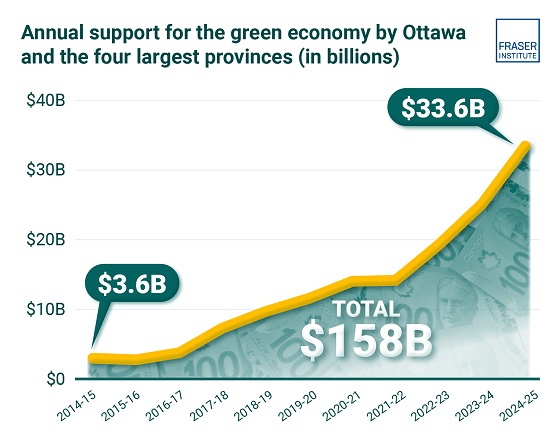MacDonald Laurier Institute
Now more than ever we must resist an illiberal turn against free speech

From the MacDonald Laurier Institute
By Kaveh Shahrooz and Aaron Wudrick
The shifting sides of the battle for free speech in the aftermath of Hamas terror
In the wake of Hamas’s brutal attack on Israel and the subsequent armed response, the pitched battle over free speech and cancel-culture in the West has suddenly taken an unexpected turn.
Until last week, it had been the “woke” left deplatforming speakers, calling for boycotts of those who questioned leftist orthodoxy, or firing people for making arguments that progressive cultural arbiters deemed “hateful”. Progressives often denied that cancel-culture even exists, but when pressed would defend punishing the holders of heterodox opinions on the basis that free speech does not mean freedom from consequences.
The political right, often on the receiving end of cancellation attempts, made championing free speech a cornerstone principle.
Almost overnight, these roles were reversed.
In response to deeply offensive rallies and statements coming from the left that seemed to champion (or at least condone) Hamas, it was suddenly the right calling for the government to ban pro-Palestine demonstrations, demanding that those taking part in such protests be fired from their jobs, and even going so far as calling for these people to be blacklisted from future employment opportunities.
Meanwhile, progressive-dominated institutions have conveniently rediscovered a passion for free speech. Harvard University, for example, sits near the bottom of university free speech rankings. Yet suddenly, when faced with criticism for not censuring student groups that applauded Hamas, Harvard President Claudine Gay put out a statement celebrating Harvard’s commitment to free expression.
This is not the first time that the left and right have switched sides on the issue of free speech. In an earlier era, it was the religious right calling for censorship of material it considered to be immoral and the left defending freedom of expression.
The constant shifts in position suggest that many people and institutions want free speech for themselves but their support for those same protections evaporates in the face of ideas they abhor.
But a selective commitment to principle is no commitment at all.
So it is perhaps at this moment, when both right and left have felt the harsh sting of cancel culture, that we can collectively articulate principles that will protect the ability of all sides to express views that others find distasteful.
The first and most important principle that should guide lawmakers and institutions that influence speech rights alike is that society’s zone of permitted speech should be as broad as possible. A free society starts from the premise that all humans are fallible and must continuously search for truth through vigorous debate. Our laws, policies, and norms therefore should be designed to free people to openly question accepted orthodoxies without having to fear financial, professional or reputational ruin.
This should not be mistaken for a ‘absolutist’ interpretation of free speech. Words that incite “imminent lawless action” and public incitement and wilful promotion of hatred are criminalized in the U.S. and Canada, respectively. Most democratic countries also rightly punish fraudulent statements and libelous assertions. This should continue to be the norm in civilized societies.
Nor does it mean that we must refrain from expressing moral outrage or passing judgment on those who hold abhorrent opinions. Offensive speech can, and often should, be met with condemnation and rebuttal from institutions, government and the public at large – but this is not the same thing as outlawing it.
When in doubt, our institutions should err on the side of speech. Substantive institutional punishment for speech that is legally permitted should be rare and reserved for truly extreme cases. Expressing views on controversial topics, be it the view that Israel is to blame for the conflict in Gaza or that there are only two genders, should not lead to a person losing their livelihood or having their right to peaceful protest outlawed.
To achieve this outcome, government officials must show leadership by refusing to cave to demands for censorship. Further, employment laws should be modernized to make it harder for employers to fire someone for political expression outside the workplace. Doing so would blunt the destructive power of cancel culture to threaten livelihoods.
A second principle that will hopefully protect us from the excesses of cancel culture is cultivating a culture of forgiveness and second chances. Everyone makes mistakes, and there should exist a path to redemption – especially in a world where simply Googling someone’s name can reveal the worst mistakes they’ve ever made.
In recent years, as progressives cancelled many people for increasingly minor infractions, we began to see a growing trend of groveling apologies, uncomfortably reminiscent of Maoist struggle sessions. These apologies would often be rejected by a ferocious online mob which, sensing weakness, called for blood. But an unforgiving society in which expressing the wrong idea or even telling an off-colour joke can render one persona non grata indefinitely is, by definition, a highly illiberal one. And it is not one in which any decent person would wish to live.
The solution here is largely cultural. It requires that our institutions not immediately fire or blacklist people when faced with organized pressure tactics to do so. Instead, they should develop thoughtful ways for people who have expressed genuinely repulsive views, not just politically unpopular ones, to learn why their community rejects such views. If the speaker shows genuine remorse and makes amends, they should eventually be forgiven.
The left and the right each portray the other side’s speech as “hate speech” and accuse opponents of “censorship”. But many of these claims are in the eye of the beholder, and still others are made in bad faith.
The effect of this, as both sides have now experienced, has been a poisoned atmosphere. The free speech values that have served liberal democratic societies well for the past few centuries are the antidote. It is time for us to rediscover those values.
Kaveh Shahrooz is a lawyer, human-rights activist and senior fellow at the Macdonald-Laurier Institute.
Aaron Wudrick is the domestic policy director at the Macdonald-Laurier Institute.
armed forces
Underfunded and undermanned, Canada’s Reserves are facing a crisis

The Macdonald Laurier Institute
By J.L. Granatstein for Inside Policy
With the new threats facing Canada and NATO, change must come quickly: Canada needs to fix the Army Reserves.
Canada’s once-proud Reserves force is fading fast – and without urgent action, it risks becoming irrelevant.
The Canadian Armed Forces Primary Reserves have an authorized strength of 30,000, but the present numbers of the Army, Navy and Air Force Reserves as of November 2024 are only 22,024. The RCN Reserves number 3,045, the RCAF 2,162, and the Army 16,817. This is frankly pathetic, all the more so as the regular forces are sadly understrength as well.
The Army Reserves have a long history, with some units dating back before Confederation. Before both world wars the Militia’s strength was roughly 50,000, generated by populations of eight million in 1914 and eleven million in 1939. Amazingly, despite a lack of training and equipment, the Militia provided many of the Army’s officers, up to and including successful division and regimental commanders, and large numbers of the senior non-commissioned officers. A century ago, even after some consolidation following the Great War, almost every town and city had an armoury and a Militia unit with a cadre of officers, good numbers of enlisted men, and some social status in their community. The factory owners, bankers, and well-off were heavily represented, and the Militia had real clout with representation in Parliament and easy access to the defence minister.
Not any longer. The armouries in most of Canada have disappeared, sold off by governments and levelled by developers, and those that still stand are in serious need of maintenance. The local elites – except for honorary colonels who donate funds for extra kit, travel, celebratory volumes, and to try to stop Ottawa from killing their regiment – are noticeably absent.
So too are the working men and women and students. As a result, there are Army Reserve units commanded by a lieutenant-colonel with three majors, half a dozen captains, ten lieutenants, a regimental sergeant major and any number of warrant officers, and under seventy in the ranks. It is a rare Reserve regiment, even those in Canada’s largest cities, which has a strength above 200, and ordinarily when a unit trains on a weeknight or a weekend only half that number turn up. Even in summer, when reservists do their serious training at Petawawa or other large bases, there will be many absentees.
And when a unit is asked to raise soldiers for an overseas posting – say for the Canadian-led brigade in Latvia – it might be able to find ten or so volunteers, but it will be highly unlikely to be able to do so when the next call comes. Reservists have families, jobs or school classes, and few are able and willing to go overseas and even fewer to do so for subsequent deployments.
Without reservists filling the ranks (and even with them providing up to 20 per cent of a battalion’s strength), the undermanned regulars must cobble together a battalion of 600 or so by seconding troops from another Regular unit. After being brought up to Regular force standards before deployment, the reservists have performed well in operations, for example, in Afghanistan.
So why can’t the Army Reserves find the men and women to join their ranks? The reasons are many and much the same as the recruitment difficulties facing the Regular Army. Sexual harassment cases have abounded, affecting the highest ranks and the lowest. Modern equipment has been and is continuing to be lacking.
Procurement is still bogged down with process, paperwork, and long timelines – for instance, approving a new pistol took a decade. And the Reserves get modern equipment only after the Regulars’ needs are met, which unfortunately means never. Instead of a tank or a Light Armoured Vehicle, units get pickup vehicles painted in dark green and see anything more only on their rare days of training in the field.
Leaders of the Reserves have called for a separate budget for years, demanding that they decide how the funds are allocated. National Defence Headquarters has refused, rightly claiming that the underfunded Regulars have higher priority. But the Reserves point to official documents that in 2019-20 demonstrated that of $3.018 million allocated to the Reserves, only $1.3 billion reached them, the rest being unspent or re-allocated to the Regulars.
With some reason this infuriates Reservists who point to this happening every fiscal year.
So too does what they see as the condescension with which they are treated. A Reserve major is equal in rank to a Regular major, but both know that the Regular is almost always far better trained and experienced for his job and that rankles. (Many years ago, when I was a junior officer, I remember another Regular referring to “the ****ing Militia.” I know that Reserve officers reverse the compliment.)

Today with unemployment above nine per cent and with young Canadians’ unemployment rate even higher, the Reserves pay a new private a daily rate of some $125 (The Carney government recently promised a substantial pay raise). This ought to be a good option to earn some money. The Toronto Scottish, an old and established infantry unit, for example, has a website that lists other benefits: up to $8,000 for educational expenses and up to $16,000 for full-time summer employment. The Toronto Scottish has two armouries in the western suburbs, a female Commanding Officer, but under 200 soldiers. There should be a real opportunity in the current circumstances to increase those numbers by a good advertising campaign pitched directly at young men and women in the Toronto suburbs. The same can be said for every big city.
But the small town and rural units, tiny regiments whatever their storied histories, are unlikely to be able to grow very much. National Defence Headquarters needs to set a number – say 150, 200, or 250 – above which a unit will keep its command structure. Below that standard, however, units will be stripped of their higher ranks and effectively consolidated under the Reserve brigade in their area.
Reservists have fought such suggestions for years, but if the Reserves are to become an efficient and effective force, this is a change that must come. One such experiment has combined the Princess of Wales Own Regiment in Kingston, Ontario, and the Brockville Rifles by putting the Commanding Officer of the first and the Regimental Sergeant Major of the second in charge. Unit badges can remain, but this reduces the inflated command staffs.
In reality, these small regiments are nothing more than company-sized sub-units, and sub-units of less than a hundred simply cannot train effectively or draw enough new members from their small town and rural catchment areas. Combined they can function effectively.
The federal government will soon release an army modernization plan. Change is always difficult but with the new threats facing Canada and NATO, change must come quickly. Canada needs to fix the Army Reserves.
Historian J.L. Granatstein is a member of the Macdonald-Laurier Institute’s Research Advisory Board. A bestselling author, Granatstein was the director and CEO of the Canadian War Museum. In 1995, he served on the Special Commission on the Restructuring of the Reserves.
Housing
Government, not greed, is behind Canada’s housing problem

By Anthony De Luca-Baratta for Inside Policy
When it comes to housing unaffordability in Canada, Prime Minister Mark Carney has correctly diagnosed the problem – but prescribed the wrong solution. The cost of new homes across the country increasingly exceeds the average family’s budget. But Carney’s proposal to establish a new federal entity, Build Canada Homes, to “get the government back in the business of homebuilding,” will make matters worse.
During the recent election campaign, the Liberal leader promised to make the federal government into an affordable housing developer by, among other proposals, offering low-cost financing to affordable-housing builders. This approach falsely implies that housing is what economists call a public good – something governments provide because the market cannot.
National defence is a perfect example of a public good: private contractors alone would be unable to withhold protection from those who failed to pay for their services, incentivizing many to welcome the security without paying a dime. In economics jargon, this is known as the “free-rider problem.” Defence contractors would quickly go bankrupt, and the nation would be left defenceless. For this reason, the government is the primary provider of national defence in all functioning states.
If housing suffered from the same market failure as national defence, the government’s approach would have some merit. But it does not, indicating that housing is not, in fact, a public good. The laws of supply and demand are thus the most efficient way of determining both the quantity and price of housing.
In a free housing market, when prices begin to rise, builders build more units to earn higher profits. Over time, competition among builders, homeowners, and landlords forces prices back down because individuals who overcharge lose customers to those who do not. Because overcharging is bad for business, the market provides an abundance of housing at prices negotiated among millions of buyers and sellers. The result is a natural supply of affordable housing – no special incentives needed.
Some in Canada might dismiss this logic as hopelessly naïve. According to these individuals, inflated prices come primarily from landlords and developers squeezing Canadians for more profit and greed is running rampant in the Canadian housing market.
The truth is that developers and landlords are responding rationally to bad economic policy, and homebuyers and renters are footing the bill. Municipalities across Canada limit building heights, set aesthetic standards, ban certain types of construction in designated areas, impose parking requirements, and legislate minimum lot sizes, among a host of other land-use regulations.
These rules make housing harder and more costly to build, constraining supply and radically inflating prices. The C.D. Howe Institute estimates that these regulations cost homebuyers an average of $230,000 in Vancouver, Abbotsford, Victoria, Kelowna, Calgary, Toronto, and Ottawa-Gatineau. In Vancouver, that figure is an eye-watering $1 million.
It is this economic reality, not an unwillingness to build affordable housing, that lies at the root of Canada’s housing crisis.
Housing Minister Gregor Robertson inadvertently admitted as much when he cautioned that there would be no quick solution to Canada’s housing crisis because “projects take years to approve and build.” The minister failed to acknowledge that these delays are due to cumbersome municipal regulations.
To solve Canada’s housing crisis, Carney must begin by recognizing that affordable housing in Canada is in short supply because local governments have made it impossible to build. The housing market could provide affordable housing on its own – no taxpayer-funded subsidies required – if only the government would reduce burdensome industry regulations. Just look at jurisdictions with virtually no land-use regulations, like Houston, Texas, where housing is abundant and affordable. Studies have consistently shown that wherever land-use regulations are low, so are home prices.
To be fair, the Liberal Party’s election platform did acknowledge the need to cut federal housing regulations. It also suggested that it wanted local governments to streamline development, though it was short on specifics. But since the election, there is no sign that the government is moving forward with any of these proposals.
The prime minister needs to tell local governments that their federal funds will dry up if they don’t start getting out of the way of housing development. He should also offer bonuses to cities that are especially quick to build new units. Canadians need shovels in the ground now. It is time for the prime minister to use the bully pulpit to put them there.
Anthony De Luca-Baratta is a contributor to the Center for North American Prosperity and Security, a project of the Macdonald-Laurier Institute, and a Young Voices Contributor based in Montreal. He holds a master’s degree in international relations from the Johns Hopkins School of Advanced International Studies in Washington, DC.
-

 Business2 days ago
Business2 days agoTrans Mountain executive says it’s time to fix the system, expand access, and think like a nation builder
-

 Economy2 days ago
Economy2 days agoStunning Climate Change pivot from Bill Gates. Poverty and disease should be top concern.
-

 Addictions2 days ago
Addictions2 days agoThe Shaky Science Behind Harm Reduction and Pediatric Gender Medicine
-

 International2 days ago
International2 days agoBiden’s Autopen Orders declared “null and void”
-

 Business2 days ago
Business2 days agoFlying saucers, crystal paperweights and branded apples: inside the feds’ promotional merch splurge
-

 Business2 days ago
Business2 days agoClean energy transition price tag over $150 billion and climbing, with very little to show for it
-

 Internet22 hours ago
Internet22 hours agoMusk launches Grokipedia to break Wikipedia’s information monopoly
-

 Business17 hours ago
Business17 hours agoCanada heading into economic turbulence: The USMCA is finished and Canadian elbows may have started the real fight











